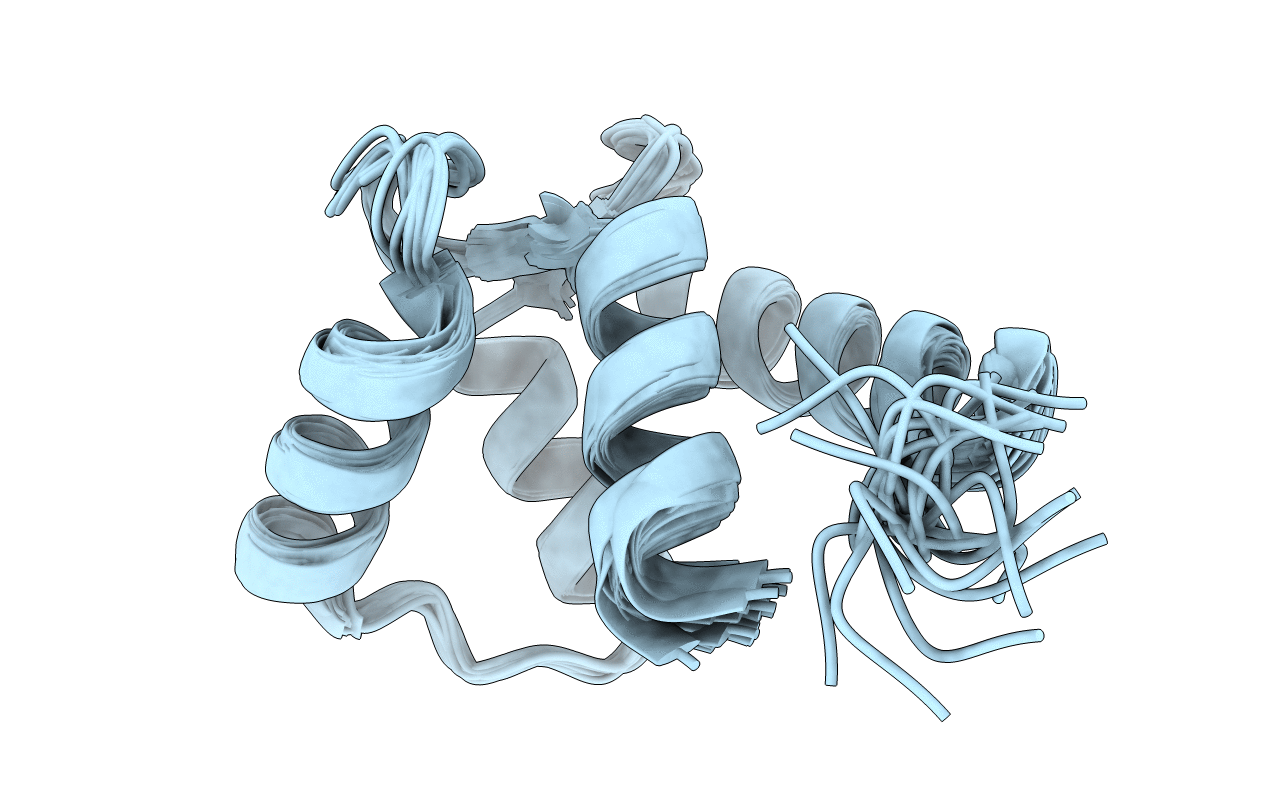
Deposition Date
2005-08-09
Release Date
2005-08-23
Last Version Date
2024-05-01
Entry Detail
PDB ID:
2AMI
Keywords:
Title:
Solution Structure Of The Calcium-loaded N-Terminal Sensor Domain Of Centrin
Biological Source:
Source Organism:
Chlamydomonas reinhardtii (Taxon ID: 3055)
Host Organism:
Method Details:
Experimental Method:
Conformers Calculated:
50
Conformers Submitted:
20
Selection Criteria:
structures with the least restraint violations,structures with the lowest energy


